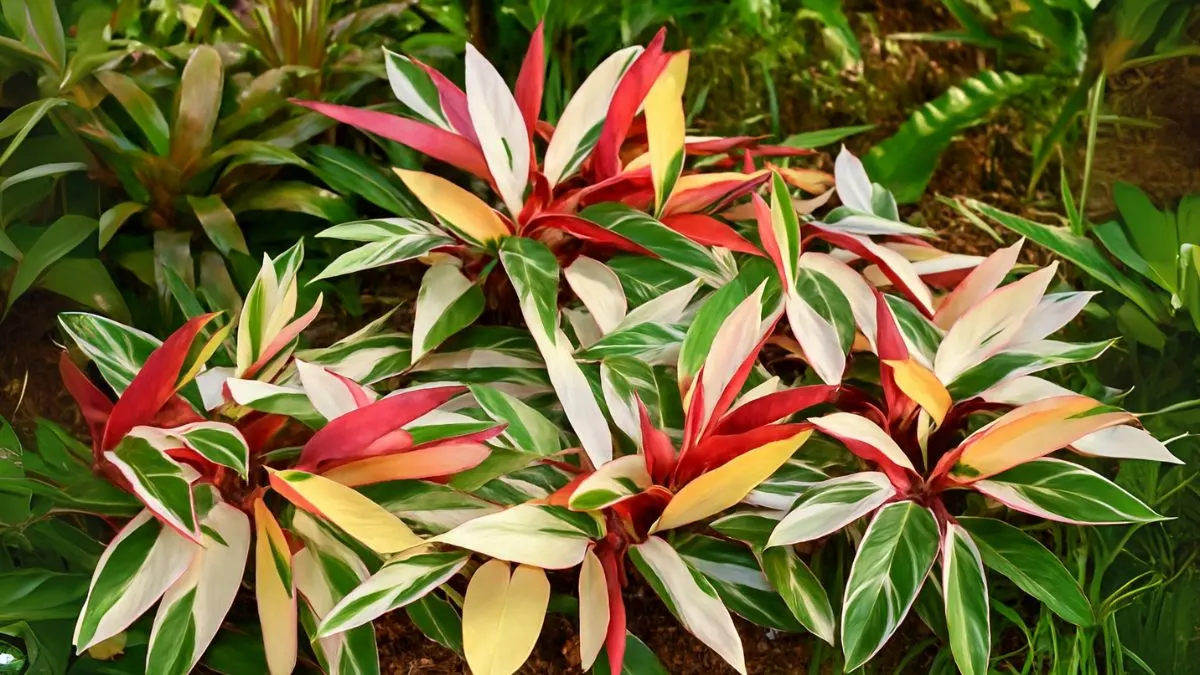The Stromanthe, especially the Stromanthe Triostar, is one of the most stunning indoor plants you can grow. Known for its bold pink, green, and cream-colored leaves, it brings a tropical flair to homes in Canada, the USA, and all over the world.
But beauty comes with responsibility. This is not a plant you can neglect. Stromanthes demand attention to light, humidity, and soil moisture. In this article, I’ll share everything you need to know about Stromanthe Plant Care, along with some personal tips that saved my Triostar from wilting more than once.
Light: Bright but Gentle

The Stromanthe thrives best when you place the plant in bright, indirect light. Direct sunlight can scorch its delicate variegated leaves, while too little light can dull its vibrant patterns.
- Always provide it with bright, indirect light, consistently moist (but not soggy) soil, and high humidity.
- East-facing windows are ideal, but filtered southern light also works well.
- In darker Canadian winters, supplementing with a grow light can keep its colors from fading.
When I moved my Triostar from a dim hallway to a window with filtered light, the difference was striking—the pink hues came back stronger than ever.
Watering: The Balancing Act
Watering is the trickiest part of Stromanthe care. Too much, and you risk root rot. Too little, and leaves crisp at the edges.
- Aim to maintain your Stromanthe lightly, evenly moist.
- Keep the soil moist but avoid waterlogging.
- Triostar like to be kept barely moist at all times, so consistency is key.
- Your Stromanthe Plant needs a thorough watering when 25–50% of the soil volume is dry.
Here’s a quick guide:
Season |
Watering Frequency |
Key Tip |
Summer |
Every 5–7 days |
Higher humidity, more water |
Winter |
Every 10–14 days |
Reduce frequency, avoid soggy soil |
Hot Days |
2–3 times a week |
Mist leaves to boost humidity |
During one hot July in Toronto, I noticed crispy leaf tips. Increasing watering and misting the leaves helped bring back their healthy sheen.
Also Read: Bamboo Palm Plant: The Perfect Green Companion for Fresh, Healthy Living
Humidity & Temperature: Tropical Comfort
Native to rainforests, Stromanthe plants crave humidity. To mimic their natural environment:
- Maintain high humidity levels, ideally 60% or higher.
- Group plants together, use a pebble tray, or run a humidifier.
- Keep them away from heaters and cold drafts.
I once placed my Stromanthe near a heating vent in winter—it quickly developed brown tips. A humidifier was a game-changer, restoring its lushness within weeks.
Soil & Potting Mix
The right soil ensures your Stromanthe roots don’t sit in water.
- Use a peat-based mix enriched with perlite or orchid bark.
- The goal: soil that retains moisture but drains well.
- Repot every 2–3 years to refresh nutrients and avoid compaction.
Think of Stromanthe as a plant that loves damp forest floors but not swampy puddles.
Pruning and Cleaning: Essential for Healthy Growth
Like many tropical plants, Stromanthes benefit from routine maintenance.
- Pruning and Cleaning keeps them looking their best.
- Remove yellowing or damaged leaves to encourage new growth.
- Wipe the broad leaves with a damp cloth to clear dust and boost photosynthesis.
I make pruning part of my weekend plant-care routine—it keeps my Triostar neat and prevents pests from settling.
Also Read: Step-by-Step Guide to Planting Onion Sets for Big Harvests
Why Stromanthe is Loved in Canada, USA, and Beyond
- In Canada, Stromanthe is a top choice for indoor plant enthusiasts who want a burst of color during long winters.
- In the USA, it’s widely grown in homes and offices because it’s both decorative and air-purifying.
- Globally, its tropical flair and striking foliage make it a sought-after statement plant.
Its combination of beauty and manageable care (once you learn its needs) has made it a favorite across continents.
Common Mistakes to Avoid
Even though Stromanthe is resilient, avoid these pitfalls:
- Overwatering: Ignoring the rule to keep the soil moist but avoid waterlogging leads to root rot.
- Poor Light: Forgetting to place the plant in bright, indirect light will dull its colors.
- Low Humidity: Without high humidity, leaf tips dry out quickly.
By steering clear of these mistakes, your Stromanthe will remain a showstopper year-round.
Personal Experience: Lessons From My Triostar
My first Stromanthe Triostar nearly didn’t make it. I placed it in low light, watered inconsistently, and never misted it. The result? Faded leaves and brown tips.
After research, I began to provide it with bright, indirect light, consistently moist (but not soggy) soil, and high humidity. Within a month, I saw fresh variegated leaves unfurling. It taught me that Stromanthe isn’t difficult—it’s just particular.
Your Stromanthe Survival Guide
To summarize:
- Place the plant in bright, indirect light.
- Aim to maintain your Stromanthe lightly, evenly moist.
- Keep the soil moist but avoid waterlogging.
- Remember, Triostar like to be kept barely moist at all times.
- Your Stromanthe plant needs a thorough watering when 25–50% of the soil volume is dry.
- Don’t forget pruning and cleaning to keep it looking its best.
👉 Ready to elevate your plant collection? Add a Stromanthe and watch it transform your space with its dazzling leaves and tropical charm.






